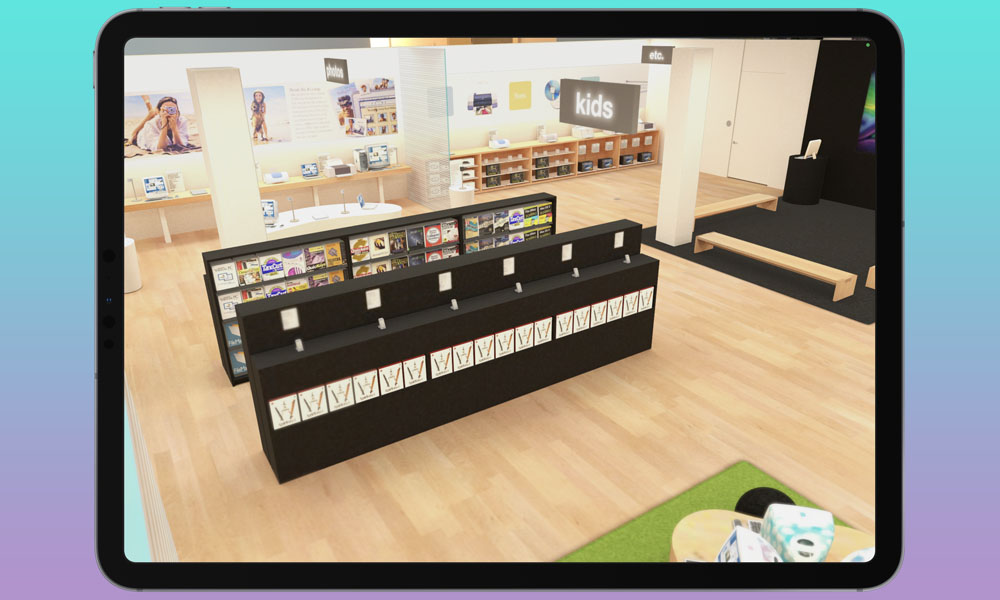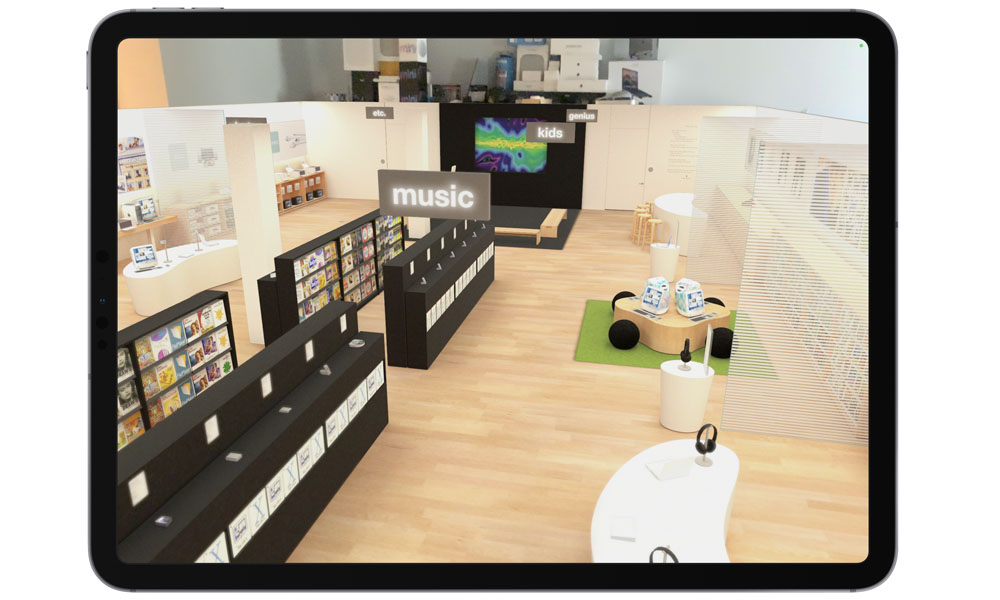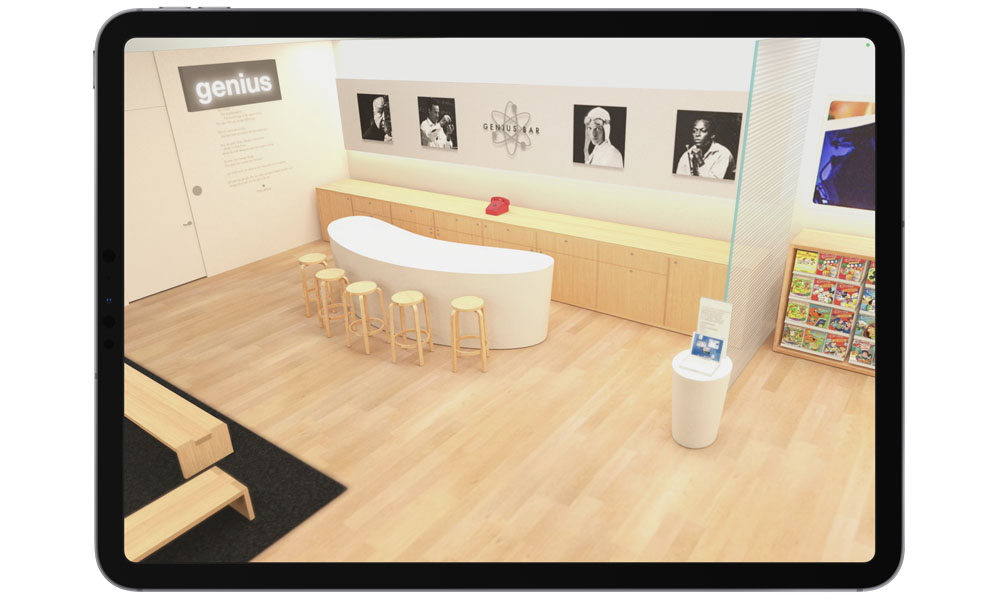Blast from the Past! Take a Walk Through the Very First Apple Store in Augmented Reality
 Credit: Michael Steeber
Credit: Michael SteeberToggle Dark Mode
It was twenty years ago this week that Apple opened its very first two retail stores — one in Tysons Corner, Virginia, and the other in Glendale, California. Now, thanks to the fusion of Apple’s modern Augmented Reality capabilities and some painstaking work by 9to5Mac’s Michael Steeber, you can take a virtual walk through the very first Apple Store in history — as it looked on opening day.
As Steeber adds in a footnote, Apple fans have long debated which of the two Apple Stores was truly the “first,” since the Glendale Galleria location was number R001, suggesting that it was planned internally before the one in Tysons Corner. However, since Virginia is on the East Coast, the store in Tysons Corner actually opened three hours before the one in California. It was also the store where Steve Jobs held his media tour and preview before the opening.
Either way, however, while Steeber has chosen to faithfully recreate the Tysons Corner store, a similar overall design aesthetic would have been used in all Apple Stores worldwide. However, since Steve Jobs recorded a video tour of that particular store, it was also a much easier model to build.
In fact, the attention to detail that Steeber has put into his VR project is actually quite astonishing, right down to the signage, the number and colour of Macs found on each table — this store arrived in an era when Apple was a much more colourful company — and even the third-party software that could be found on the shelves.
One thing that’s particularly significant here as well is that even though the Apple Store clearly had a “Music” section, there’s not an iPod in sight. At that point, Apple had only recently launched the Mac version of iTunes, but it would be another five months before anybody would even hear the word “iPod.”
Those who were around to visit an Apple Store back then can attest to the fact that Steeber’s recreation is extremely authentic, and while he wasn’t able to fill in every possible blank as he had to work “within the parameters of available information,” what he’s done is impressive enough.
As Steeber explains, those early Apple Stores were organized into eight distinct sections — home, pro, music, movies, kids, photo, Genius Bar, and “etc.” — each identified by backlit signs on the ceiling. Pinstripe glass partitions between each section were designed to be reminiscent of the original Aqua interface used in the contemporary Mac OS X versions of the time.
While it wasn’t long before Apple moved on to the large wooden tables that we’re all more familiar with, the original Apple Stores used white Corian tables shaped like kidney beans. The sections remained mostly focused by topic rather than product, although in those very early days Apple’s only product was the Mac, so the original Apple Stores were built around all the things that people could do on a Mac, and the software and accessories that empowered them to do those things.
As the VR walkthrough will show, the idea of a Theatre was very much a part of the original Apple Store vision, giving a space for Apple to host workshops, software demos, or even just show off iTunes visualizers on the 10-foot projection screen. While later Apple Stores began to omit a distinctive Theatre section, when they showed up in various store redesigns a few years ago, it was actually more a case of Apple returning to its roots than introducing something entirely new.
While many other retailers have since taken a page or two out of Apple’s book, back in 2001 it was an entirely revolutionary approach to retail sales of electronics and software, so Steeber’s AR tour is a fascinating look back at a bygone era and a store experience that changed the way we shop for consumer electronics.
The full AR experience can be accessed at 9to5Mac or directly from Steeber’s website, The Apple Store Glossary, which features tons of other fascinating bits of information on the history of Apple’s retail operations.









